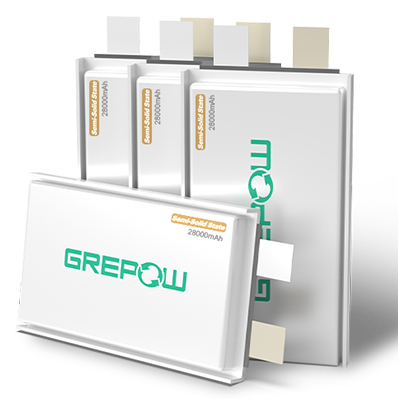NMC vs NCA Battery Cell: What’s the difference?
In the world of rechargeable batteries, NMC (Nickel Manganese Cobalt Oxide) and NCA (Nickel Cobalt Aluminum Oxide) cells are two prominent chemistries widely used in various applications, particularly in electric vehicles (EVs), unmanned aerial vehicles (UAVs) and consumer electronics. Both types offer distinct advantages and are chosen based on specific requirements of energy density, power output, and longevity. Understanding the differences between NMC and NCA cells can help in selecting the right battery for a given application.
What is an NMC Cell?
An NMC battery cell, or Nickel Manganese Cobalt Oxide cell, is a type of lithium-ion battery that uses a cathode made from a combination of nickel, manganese, and cobalt. The specific ratio of these elements can vary, with common compositions being NMC 811 (8:1:1), NMC 532 (5:3:2), and NMC 622 (6:2:2). These ratios represent the proportion of nickel, manganese, and cobalt used in the cathode material. NMC cells cathodes typically contain large proportions of nickel, which increases the battery’s energy density. However, high nickel content can make the battery unstable, which is why manganese and cobalt are used to improve thermal stability and safety. NMC cells are known for their balance between energy density, power output, and stability.

What is an NCA Cell?
An NCA battery cell, or Nickel Cobalt Aluminum Oxide cell, is another type of lithium-ion battery that uses a cathode composed of nickel, cobalt, and aluminum. Instead of manganese, NCA uses aluminum to increase stability. The typical composition for NCA cells is usually around 80% nickel, 15% cobalt, and 5% aluminum. This high nickel content contributes to the cell's high energy density and specific energy. NCA cells are renowned for their long cycle life and high energy output, making them suitable for high-demand applications.
What is the Difference Between NMC and NCA Cells?
While both NMC and NCA cells are used in lithium-ion batteries, they have distinct differences in terms of composition, performance characteristics, and applications:
●Energy Density: The energy density of an NMC battery is typically in the range of 150 to 220 Wh/kg. The energy density of an NCA battery is generally higher than NMC batteries, ranging from 200 to 260 Wh/kg. However, with advancements in technology, the energy density of NMC batteries has now increased. For example, Grepow can produce NMC battery cell with an energy density of up to 350 Wh/kg.
●Thermal Stability: NMC cells tend to have better thermal stability, making them safer and more suitable for applications where battery safety is a significant concern.
●Cost: NCA cells are often more expensive due to the higher cost of cobalt and the manufacturing processes required.
●Cycle Life: NMC cells typically have a longer cycle life compared to NCA cells, making them more durable in long-term applications.

What is the Use of NMC Battery?
NMC batteries are widely used in applications where a balance of energy density, power, and cost is crucial. Some common uses include:
●Electric Vehicles (EVs): NMC cells are popular in EVs due to their balanced performance, providing both range and power.
●Drones and UAVs: Unmanned Aerial Vehicles and drones, especially those designed for long flight times and heavy payloads, can benefit from the high energy density of NCA batteries.
●Medical Devices: Medical equipment, such as portable defibrillators, infusion pumps, and monitoring devices, often use NMC batteries due to their reliability and long-lasting power supply.
What is the Use of NCA Battery?
NCA batteries are chosen for applications where high energy density and long cycle life are critical. Their common uses include:
●Electric Vehicles (EVs): High-performance EVs, such as those produced by Tesla, often use NCA cells for their superior energy density and longevity.
●Consumer Electronics: NCA cells are used in laptops, smartphones, and other gadgets that require long battery life and high energy storage.
●Aerospace: Due to their high energy density and reliability, NCA batteries are used in aerospace applications.
Conclusion
Choosing between NMC and NCA battery cells depends on the specific requirements of the application. NMC cells offer a versatile and cost-effective solution with balanced energy and power characteristics, making them ideal for a wide range of uses from EVs to power tools. On the other hand, NCA cells provide higher energy density and longer cycle life, making them suitable for high-performance EVs, consumer electronics, and aerospace applications. Understanding these differences can guide you in selecting the right battery technology for your needs. As a global leading lipo battery manufacturer, Grepow offers professional standard and customizable NMC battery solutions to meet the needs of all knids of consumer and industrial applications. If you have any questions or needs, please feel free to contact us at info@grepow.com.
Related Articles:
LFP vs NMC Battery: Exploring the Differences
What Is a Semi-Solid State Battery?
Grepow High Energy Density Battery Solutions for Commercial Drone
Solid-State Battery VS Lipo Battery: What’s the Difference?
Related Articles
-

NMC Battery vs. LCO Battery: What’s the Difference?
2024-10-11 -

3D Mapping Drone Helps Create The Popular Game Black Myth: Wukong
2024-08-23 -

Next-Generation eVTOL Battery Technology
2024-08-22
Related products
-

37000mAh Semi-Solid State High Energy Density Battery
-

35200mAh Semi-Solid State High Energy Density Battery
-

30000mAh Semi-Solid State High Energy Density Battery
-

28000mAh Semi-Solid State High Energy Density Battery
-

20000mAh Semi-Solid State High Energy Density Battery
-

17600mAh Semi-Solid State High Energy Density Battery
-

4200mAh Semi-Solid State High Energy Density Battery
















































